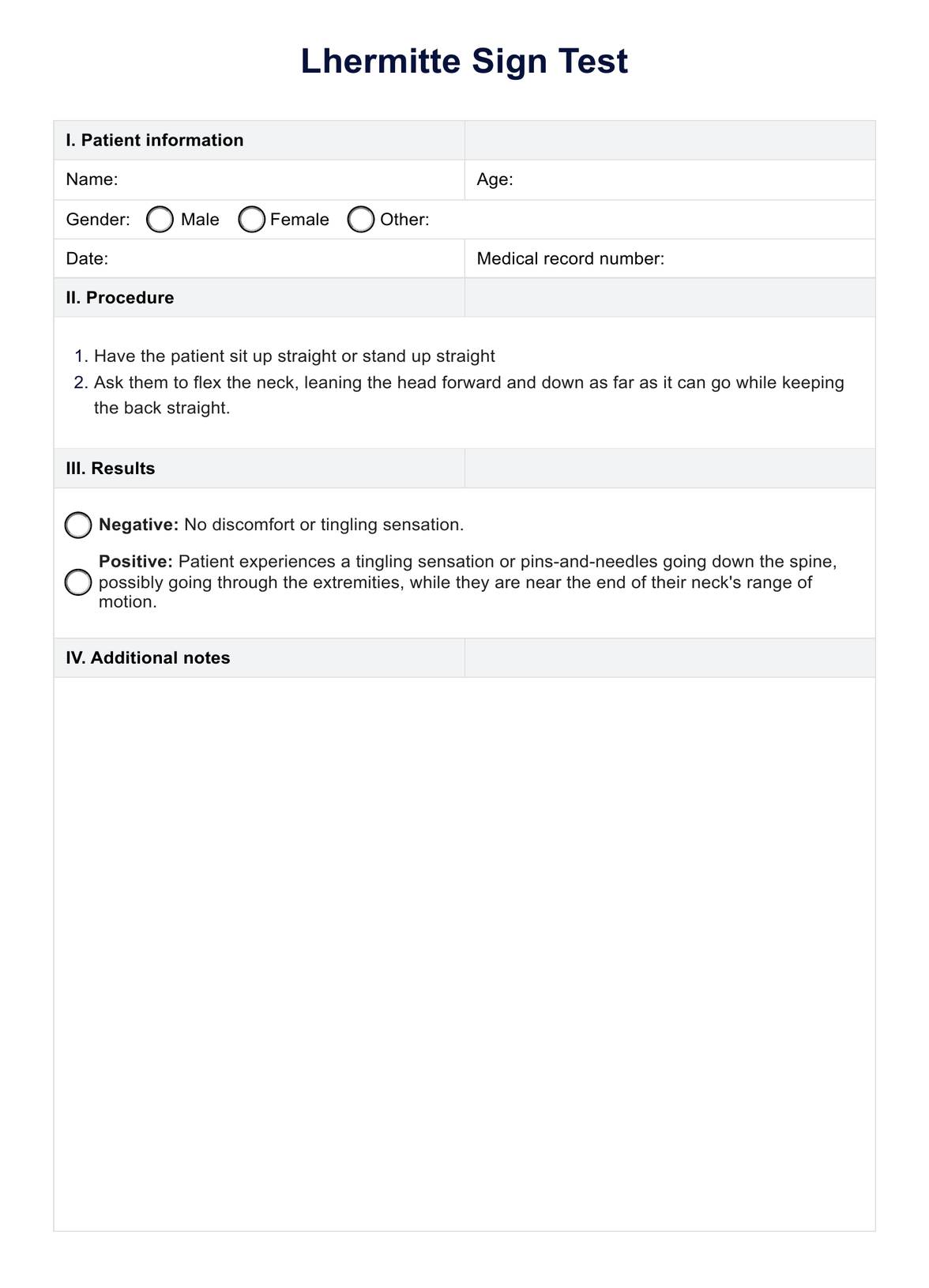A positive Lhermitte's sign suggests hyperexcitability or demyelination in the cervical spinal cord, commonly associated with multiple sclerosis (MS).

Lhermitte Sign Test
Identify the shock sensation in the spine triggered by neck flexion, often indicating MS, with the Lhermitte Sign Test. Explore diagnosis and treatment.
Use Template
Lhermitte Sign Test Template
Commonly asked questions
Lhermitte's sign is most commonly associated with multiple sclerosis (MS), but it can also occur in other conditions affecting the cervical spinal cord.
Lhermitte's sign can be triggered by bending the head forward, often eliciting the characteristic electric shock-like sensation.
EHR and practice management software
Get started for free
*No credit card required
Free
$0/usd
Unlimited clients
Telehealth
1GB of storage
Client portal text
Automated billing and online payments











